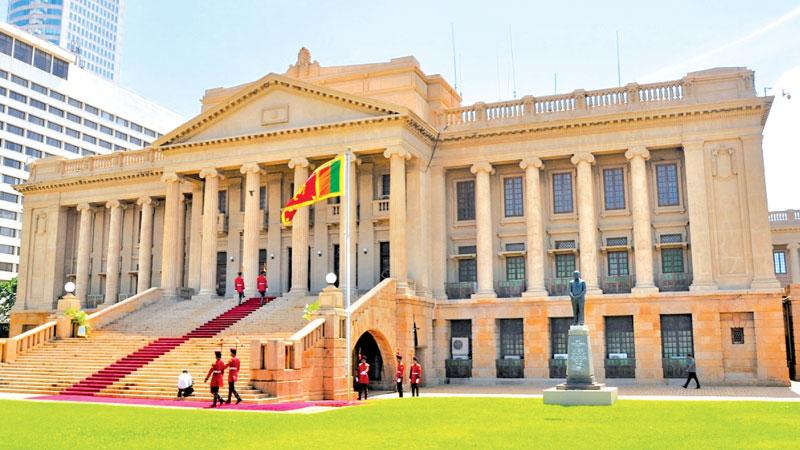
The Old Parliament Building in Colombo was built during the British colonial era in 1930. It was constructed by the Public Works Department of Sri Lanka and the chief architect was A. Woodson.
Architect Asiri Dissanayake says, “In Sri Lanka there are Portuguese, Dutch and British period buildings and the Old Parliament Building is a British period building. But, in the British period also there are certain architectural styles. This particular building has been designed in the neo-classical architectural style. The Classical architecture is the Roman and Greek architecture. Neo-classical means they incorporated some features from the classical style and modified it accordingly. Neo-classical buildings can also be found in Britain during the same period. But, because of climatic differences, because in Europe you get the temperate climates but here in Sri Lanka we have a tropical climate, accordingly, they had to adapt to the climate because you can’t just bring something from Europe and have it here.
“So what they did was, they adapted to the tropical architectural style. While this building is designed in the neo-classical style it has aspects of architectural detailing and style which co-relates with the tropical architecture. Tropical architecture takes into consideration the climate which is hot and humid and we also have to project for the monsoons. Tropical architecture relates to the climate. There are a few main features of tropical architecture if you take some buildings. The features of tropical architectural style are, e.g. eaves on the roofs. If the eave is extended, the reason for this is to prevent the sun from directly gaining access to these walls, so that the walls are protected with these eaves. The eaves also create a shaded area and a sort of a micro climate which is cooler and when this area is cooler the interior of the building also gets cooler.” Dissanayake adds.
He elaborates, “Another important aspect of tropical architecture is that you would have thicker walls so that convection energy or the heat coming inside the building would be reduced. The Old Parliament building has the neo-classical style but has adapted to the tropical climate by using some of these features. Another way in which they have adapted to this tropical climate is by creating a verandah. Because this is a neo-classical as well as a tropical building they have to make the walls thicker. They have used limestone for the walls in the ground floor and covered it with the granite which they sourced from Ruwanwella. For the rest of the building they have used a mortar which acts as a thermal insulation barrier as well, because the mortar prevents the heat getting into the limestone. Clay bricks are the best because they create a thermal convection barrier, but because they have used limestone in these neo-classical buildings they had to cover it up with a very thick thermal insulation layer which is the mortar”.
Dissanayake explains, “In the classical architectural style there is the Doric, Ionic and Corinthian which is mainly determined by the level of detailing. The Doric order has very plain columns and there are not many decorations. When it comes to the Ionic order they have tried to decorate it a little bit more so that the capital of the column is decorated. In the Corinthian style there are very elaborate decorations. The Parliament building has incorporated features of the Ionic order. All these three types have many similarities because they all originated in the same era. The Doric columns can be found in Greek temples and at the beginning of the Roman period also they had the Doric columns. Thereafter, during the next period they started to decorate. In Greek times they had to use the hard stones but hard stones are very difficult to carve into these details. Corinthian architecture originated at the beginning of the Roman period and continued into the Renaissance period.”
“There is a very important thing called optical illusion when you are dealing with columns. If you build a column when you go further away you would see it a bit crooked. So they built it at an angle so that when you look at it from far you would see it as straight. Even the Westminster Abbey in London, incorporates features of the Ionic style,”Dissanayake adds.
(Asiri Dissanayake is a Chartered Architect and Associate Member of the Sri Lanka Institute of Architects, visiting lecturer, Programs of Master of Urban Design, Bachelor of Architecture and Bachelor of Building Economics, University of Moratuwa.)
